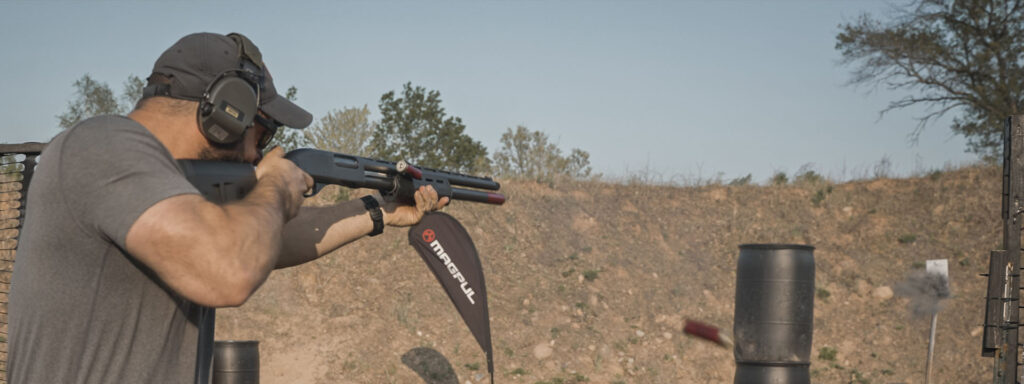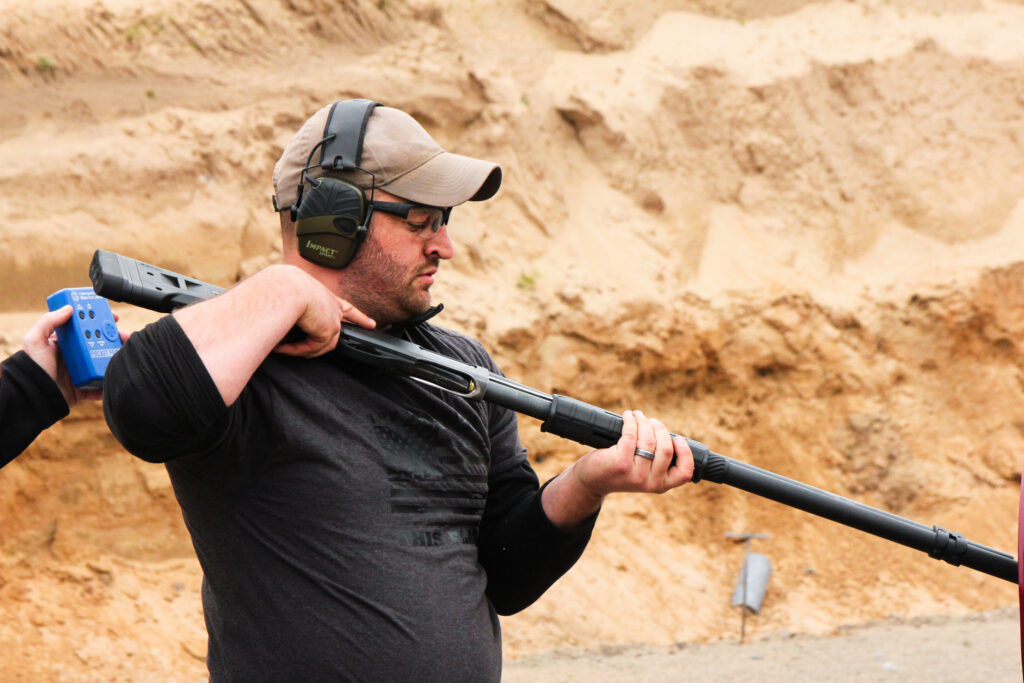Ask around at any 3-Gun match and most folks will tell you that you’re wasting your time with starting out on a pump shotgun in the sport. “Too slow,” they’ll say. “You’ll be outgunned.” In fact, if you’re brand new, odds are someone has already advised you to not even consider that old Mossberg 500 or Remington 870 duck gun collecting dust in your safe.
Well, I’m here to challenge that advice. Back when I first got into 3-Gun around 2013, my only shotgun was a camo-stocked Remington 870 with a 28″ barrel meant for duck hunting. I showed up with that pump, ran it in matches, and learned more about shooting under pressure than I ever expected. In a training class early on, I was even able to outpace competitors armed with Benelli M2s and Mossberg JM930s during a mock stage. That experience gave me the confidence to stick with the pump for my first season, and it proved a point: the pump-action underdog can hold its own.
And if you think this is just old history, think again. At the 2025 USPSA Multigun Nationals, competitor Evan Nichols stunned the field by landing a third-place finish in Tactical division, while running a pump shotgun against a sea of semi-autos and top level shooters. His podium proves what I learned a decade earlier: with skill, discipline, and efficient reloads, a pump is still a worthy contender.
In this article, we’ll explore how to make a pump work for you, which divisions allow it, what mods help turn a hunting gun into a competition rig, and the pros and cons you need to know. By the end, you’ll see why there’s no shame in bringing a pump to your first few 3-Gun matches, and how it might just teach you more than any $2000 autoloader ever could.
The beauty of a pump shotgun is that it just works. No gas system to clean. No cycling issues with light loads. No wondering if your gear is going to quit on you halfway through a stage. If you work it right, it works every time.
It’s a mechanical system that puts you fully in charge. You’re running the bolt. You’re setting the rhythm. And when you’re starting out, that kind of reliability matters more than another 0.2 seconds on the clock.
That’s not to say it’s easy, though. Far from it, actually. All that mechanical cycling is quite a bit of work, forcing you to be deliberate with every shot and even more diligent with your loading technique as it’s a hefty and punishing consequence when you’re not.

Most major rule sets (IMGA, USPSA, etc.) allow pump-actions in the standard divisions. Tactical or Modified Optics (the most popular divisions) and Limited have no rules that would prohibit the use of a pump shotgun. There’s even Heavy Metal division, albeit slowly dying off, where a pump 12-gauge is required alongside a .308 rifle and .45 ACP pistol.
At local outlaw matches, you’ll often find pumps and semis competing side by side with no special treatment. So if you’re eyeing Tac Ops with your pump, rest assured: nothing in the rules is stopping you. The only question is how you can make the most of it.
Everyone talks about splits and transitions. But you know what actually wins stages with shotguns? Loading.
It doesn’t matter what kind of gun you have if you can’t keep it fed. The quad load doesn’t care if you’re shooting a $400 pawn shop special or a $3,000 race gun, it only cares if you practiced it.
Start slow. Load smooth. Focus on efficiency. You’ll be surprised how many folks with nicer shotguns fumble their loads while you’re already back on target.
Look, we all want cool gear. But buying a high-end shotgun before you’ve even shot your first match is like buying a race car before you learn how to drive stick.
If you’ve got a pump shotgun, throw a mag tube extension on it. Polish the load port (take a dremel to it if you’re feeling crafty). Learn how to keep it running under pressure. All of that will serve you way better than dumping cash into something you don’t even know how to use yet.
A tuned-up 870 with a Nordic tube can get you through your first season – and you’ll come out of it with skills that actually translate when you do upgrade. The same extension tube can be used on your next shotgun, you just need to change out the adapter depending on the threads.

If you’re starting from scratch and want to try the pump route, look for a mid-range option in the $500–$700 range. Remington 870. Mossberg 500/590. Winchester SXP. There’s a reason these guns have been around forever: they work.
And when it’s time to move on, you’ll still get most of your money back if you sell it or hand it off to a buddy just getting into the sport.
Don’t let the gear snobs get in your head. Run what you’ve got. Show up with that pump gun. Learn the stages. Train your loads. Earn the calluses.
Because here’s the truth: 3-Gun is about solving problems with the tools in your hands. And if you can learn to do that with a pump shotgun, everything else gets easier from there.
You don’t need a $3K scattergun to start competing. Run what you have. Learn the sport, sharpen your skills, and save your money until you know exactly what upgrades will help you most. Whether it’s a camo 870 or a Mossberg 500, the pump you already own is enough to get started.
Until then, rack that slide and go to work.